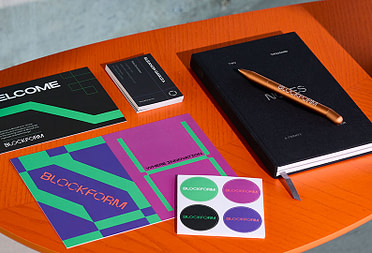How to find and keep your first clients

Where do clients come from? And how can you turn a new client into a loyal customer who’ll come back to you time and again?
Finding clients
Whether you’re transitioning out of employment or you’ve recently graduated, finding your first freelance clients can take some work. Fortunately, at this point you can make it your whole focus – later on you’ll have paid work on your plate too.
So you have the time and the motivation, all you need are some places to start looking. Here are some ideas to help you get started…
1. Explore your local trade show and event circuit
Grab your trusty Business Cards and a stack of Flyers and get on the events circuit in your area. You can find listings for events online, using sites like Eventbrite and Expodatabase, or follow the trail on Twitter and Instagram using hashtags like #tradeshows, #eventmarketing and #exhibitions. Once you’re there, it’s all about the networking…
2. Be a problem-solver on social
People love it when a solution finds them rather than vice versa. That’s why it’s worth hitting a few inboxes at companies you’d like to work for, even if they’re not actively recruiting for suppliers. LinkedIn is a great tool for this, as you can use it to research and target the right people, and automatically link them to your profile. You could chance on somebody who’s been wanting some help but hasn’t yet got around to searching for it, or make a connection that could lead to some work in the future.
Check Twitter, Facebook and your own LinkedIn feed for questions you can answer. This is a neat way to showcase your expertise to potential clients and earn a little karma at the same time. Make sure your social profiles include a link to your website or online portfolio for best results.
3. Connect with other creatives
Does your city have a thriving creative scene? If so, try attending a meetup group with fellow creative professionals. Meetup.com dominates as the place to find these, but you can also try communities like Reddit’s /r/webdesign to scout out local groups. This will help you get an idea of what kind of work is in demand, what other people in your field are charging and whether there are major projects or organizations that could use extra resource.
You should also check out local incubators and business support services. Universities and large organizations often set these up to foster entrepreneurial talent, and even if you’re not eligible for membership, they may have a jobs board or some ad hoc recommendations to offer.
Keeping clients once you’ve found them
Finding clients is hugely important, but it’s only half the story. Client retention – i.e. repeat custom – can be even more valuable than attracting new business.
That’s because once you’ve established a working relationship, it becomes quicker and easier to get jobs done. You have a built-in understanding of the client’s market, brand and company culture, and it’s more efficient for them to get you briefed on a new project. They can even help you find new clients by recommending you to others.
On top of that, repeat business is 7x less costly than acquiring new business, according to Inc.com.
Here are 3 ways to keep these kinds of connections going…
1. Geek out on their industry
Demonstrate your commitment to your clients by taking note of what’s happening in their field. Spotted a new trend in their product area, or a regulatory change that’s going to affect their business? Get in touch to see how you could help. As well as cementing relationships with your clients, doing your homework like this can help you develop a specialism that will help attract other clients in the same business niche.
2. Find a personal connection (which may involve cat GIFs)
Human relationships are incredibly powerful in business, but like any connection, they have to be authentic to be worthwhile. Any small but genuine link between you and your client contact will help them to remember you and create a positive association with your work. As you chat, find a point of commonality with them, whether it’s a shared love of a sports team, a hobby you both enjoy, or the simple joy of amusing cat gifs shared via email.
3. Become a shape-shifting adaptability machine
Be proactive in asking for feedback and acting on it. Your ability to flex and adapt to your client’s needs over time will make the difference between short-term help and long-term partnership. Keep track of their business goals, their challenges, and any changes in management structure and personnel, and be ready to adapt your ways of working accordingly.
Bonus tip: Send a post-project Postcard
After finishing a successful project, end on a high note by sending your client a Postcard to let them know how much you enjoyed working with them. It will help them remember you when new jobs come up in the future.
New to running your own business? Check out our guide to managing your first client relationships.
Keep in touch
Get design inspiration, business tips and special offers straight to your inbox with our MOOsletter, out every two weeks.













